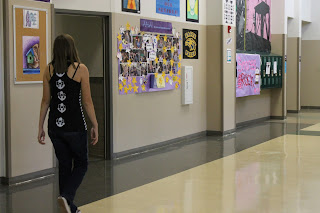High Shutter Speed
Slow Shutter Speed
At the beginning while the sun is still partially up and the courtyard has reasonable light
a.) the dunking booth- High
b.) the food eating contest- High
c.) the rock climbing wall- Slow
d.) someone working at a booth-Slow
e.) the DJ/MC working at the middle of the circle-Slow
f.) the Diamonds performance.-High
Towards the end when there is no sun and has gotten dark enough that you can't see from one end of the courtyard to the other.
a.) the dunking booth- Slow
b.) the food eating contest- High
c.) the rock climbing wall- Slow
d.) someone working at a booth- High
e.) the DJ/MC working at the middle of the circle- High
f.) the Diamonds performance.-Slow
- Aperature Priority
- Shutter Priority
- Manual



























